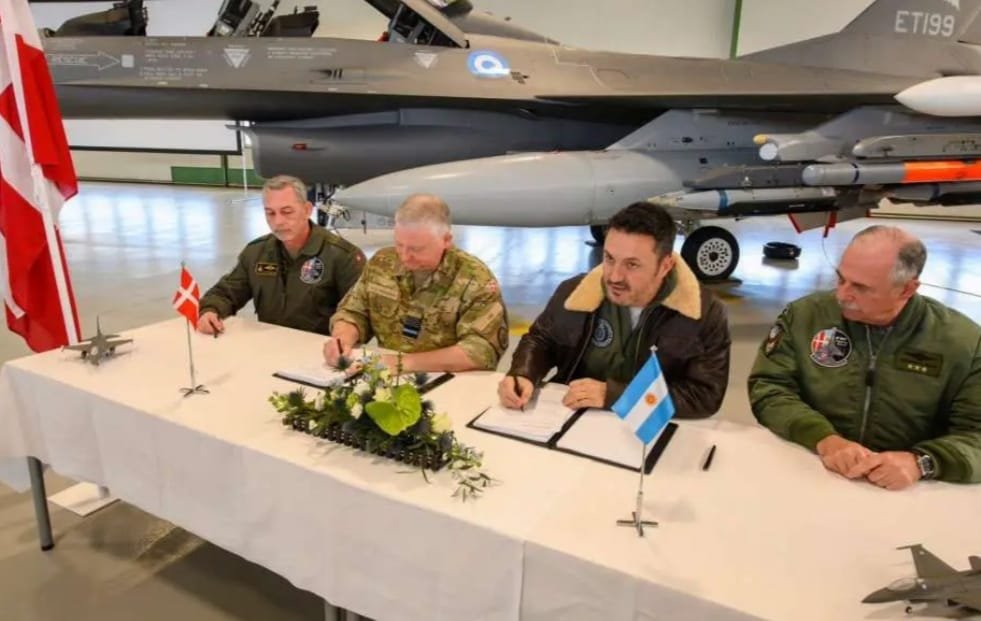
Argentina buys 24 Danish F-16 Multirole Fighter Jets
On April 16, 2024, President Javier Milei and Defense Minister Luis Petri announced via their X account (formerly Twitter) the signing of the contract to purchase 24 F-16 fighter jets from Denmark.
Argentina ends its long quest to find a suitable replacement for its Mirage aircraft, which were retired in 2015, hampered by a British veto on equipment containing UK-made components. This notably prevented the purchase of ten F/A-50 Golden Eagle aircraft from South Korea in 2020.
Due to these restrictions, Argentina had considered purchasing the JF-17 Thunder, developed by China and Pakistan, with a loan request of $664 million proposed in the 2022 budget for an ultimately unrealized purchase. Although the JF-17 had the support of the Argentine air force for its capabilities and the weapons package offered by China with few restrictions, this acquisition would have bolstered Chinese influence in South America, a prospect that changed with the United States’ authorization for Argentina to acquire Danish F-16s last October.
The election of President Javier Milei halted the discussion on the JF-17, reflecting a desire not to deepen ties with Beijing. The confirmation of the purchase of 24 F-16s by President Milei on March 20 marks the end of a long and complex process, with a total cost estimated at $650 million, divided between the aircraft and ammunition.
The F-16 Fighting Falcon, designed by General Dynamics and currently produced by Lockheed Martin, is a multirole fighter jet that first flew on February 2, 1974, and officially entered service on August 17, 1978. To date, more than 4,588 units have been built, and it remains a crucial element of numerous air forces around the world. The unit cost of an F-16A is approximately $20 million.
The F-16 is powered by a Pratt & Whitney F100-PW-229 turbojet engine with an afterburner, capable of generating up to 130 kilonewtons of thrust with afterburner, offering remarkable flight performance with a maximum speed of 2,173 km/h (Mach 2.04). This engine allows it to reach a ceiling of 15,200 meters and an impressive climb rate of 15,240 meters per minute. Its maneuverability is also supported by a thrust-to-weight ratio of 0.90, essential for air engagements and missions requiring high agility.
The design of the F-16 includes a wingspan of 9.8 meters, a length of 14.8 meters, and a height of 4.8 meters, with a wing area of 27.87 m². The aircraft can fly at a range of 550 kilometers, depending on its load and mission. Its load capabilities are significant, with an empty weight of 8,272 kg, rising to 16,900 kg at full load, including armaments.
In terms of armament, the F-16 is equipped with an internal M61A1 Vulcan 20 mm cannon and can carry a wide range of munitions on its external hardpoints, including air-to-air missiles like the AIM-7 Sparrow, Sidewinder, ASRAAM, and AMRAAM. It can also carry air-to-ground missiles like the Maverick, anti-radar HARM missiles, as well as various bombs, including laser-guided bombs JDAMs, and rockets. This capacity to carry a variety of armaments makes the F-16 extremely versatile, and capable of performing multiple types of missions, from air superiority to ground strikes.
This acquisition is welcomed by the United States, which sees the rapprochement with Argentina as a strategic priority. This comes in a context where high-level visits, such as those of CIA Director William Burns and US Southern Command chief General Laura Richardson, underscore the importance of bilateral relations. One of the major concerns for the United States is the Chinese space observation station in Argentina, inaccessible to local authorities, illustrating the complexity of geopolitical stakes in the region.


